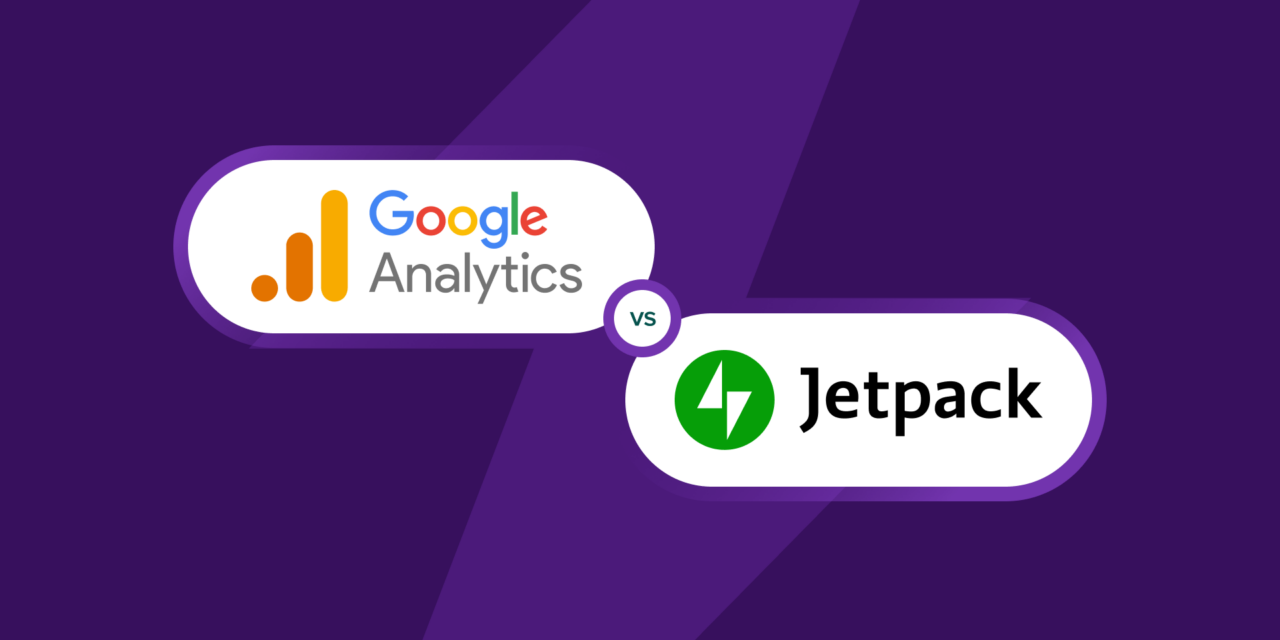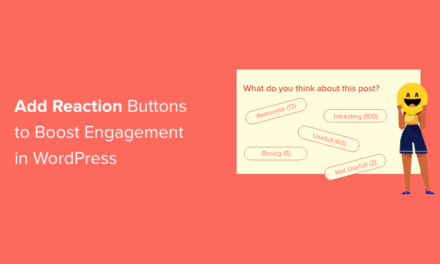Are you debating whether to use Google Analytics or Jetpack Stats for your WordPress website?
Both are popular analytics platforms, but you might be wondering which one is the better fit for you. Especially with changes to the Jetpack Stats pricing model, you may be asking yourself whether switching to Google Analytics is worth it.
Here at WPBeginner, we’ve used and recommended a variety of analytics tools to help countless users find the perfect option for their needs.
In this article, we will break down the key differences between Google Analytics and Jetpack Stats so you can make an informed decision and pick the best software for your website.
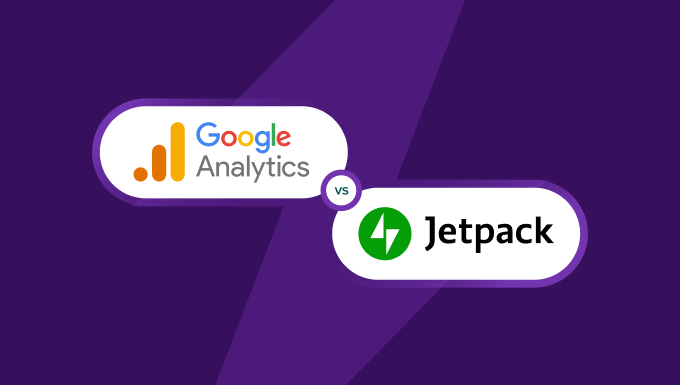
Why Trust WPBeginner?
The WPBeginner editorial team has over 16 years of experience in WordPress, digital marketing, analytics, and web development. We’ve tried and tested various plugins, themes, and software on our own projects to help users find the best solutions.
You can learn more about our WPBeginner editorial process.
Google Analytics vs. Jetpack Stats: An Overview
Ever wondered where your website visitors come from, what pages they visit, and what they click on? This is where website analytics come in. These tools help you understand your audience and their behavior so that you can make data-driven decisions to improve your website.
Google Analytics is one of the most powerful analytics platforms available. It’s a free tool by Google that allows you to examine your website’s traffic in depth.

On the other hand, Jetpack Stats is an analytics tool that comes bundled with the popular Jetpack plugin from Automattic, the folks behind WordPress.com.
Like Google Analytics, It provides an overview of your website traffic, like how many visitors you have and which pages are most popular.
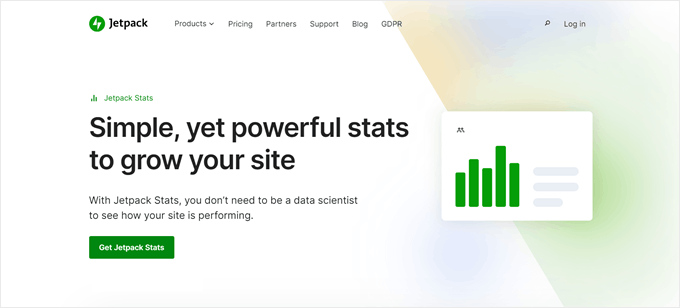
Both Google Analytics and Jetpack Stats are free to use (though the second has paid plans). This makes them popular choices for website owners looking to track their WordPress site stats without breaking the bank.
Why Are WordPress Users Leaving Jetpack Stats?
Jetpack Stats used to be a popular choice, but some pricing changes have left users frustrated.
Many users are now classified as ‘commercial’ and require paid plans to access features they previously had for free, even if their website is non-profit or they only make a few dollars a month. This can be prohibitively expensive for very small businesses or people who are simply fundraising through their websites.
This pricing change has led many people to explore alternatives, including Google Analytics.
While Google Analytics is powerful, it’s not built specifically for WordPress. Fortunately, to connect it with WordPress, you can use beginner-friendly plugins like MonsterInsights.
Now that you know why users are migrating away from Jetpack Stats, let’s review the key features of both Google Analytics and Jetpack Stats. You can use the quick links below to navigate through this article:
- Ease of Use – Google Analytics vs. Jetpack Stats
- Web Analytics Features – Google Analytics vs. Jetpack Stats
- Data Accuracy – Google Analytics vs. Jetpack Stats
- eCommerce Tracking – Google Analytics vs. Jetpack Stats
- Support – Google Analytics vs. Jetpack Stats
- Pricing – Google Analytics vs. Jetpack Stats
- Google Analytics vs. Jetpack Stats: Which Is Best?
Ease of Use – Google Analytics vs. Jetpack Stats
Ease of use refers to how user-friendly a platform is, including how easy it is to set up and navigate. Let’s compare how Google Analytics and Jetpack Stats stack up in terms of user experience for WordPress users.
Jetpack Stats: Simple Yet Easy to Use
Our first impression of Jetpack Stats is it’s a breeze to set up. You can just install the WordPress plugin like any other and connect it to your WordPress.com account to get started.
The interface is simple and uses clear language. Right in the WordPress dashboard, you’ll see your key stats like visitor traffic, views, comments, likes, referrer traffic, and visitor location.
It also displays the percentage change compared to the previous period, making it easy to see trends.
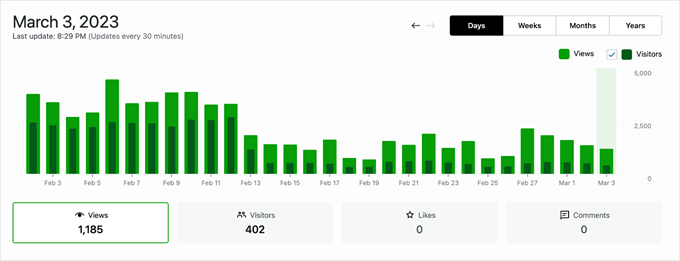
Switching between daily, weekly, monthly, and yearly views is also easy for analyzing your overall performance.
For bloggers, you can switch to the ‘Insights’ tab for specific data like peak traffic times, most popular tags and categories, and top commenters.

Google Analytics: Slightly Higher Learning Curve
Setting up Google Analytics itself is quite straightforward, as you only need to answer a few questions on their website.
However, some users may find it tricky to configure it with WordPress as some code is involved. Thankfully, plugins like MonsterInsights simplify the process. When we tried it, all we needed to do was install the plugin and connect it to an existing Google Analytics account.
While the Google Analytics platform is powerful, its interface can be overwhelming for beginners due to the sheer number of buttons and settings. Fortunately, there’s a built-in tour in the Google Analytics dashboard to help newcomers navigate the platform.
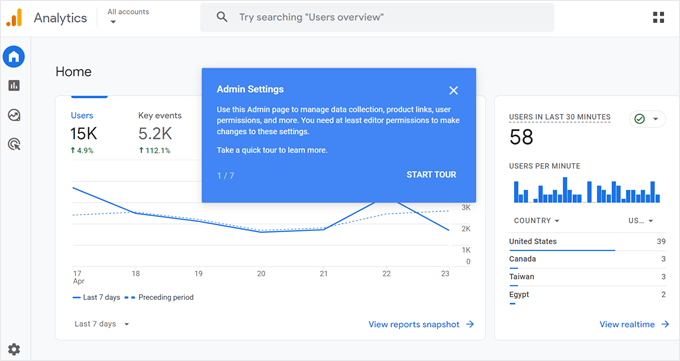
MonsterInsights also helps bridge this gap by displaying essential Google Analytics reports right within your WordPress dashboard.
For example, the Reports tab offers a well-organized layout of your data, showing new vs. returning visitors, device breakdowns, top traffic sources, top-performing posts/pages, and more. You can also customize the date range to get an overall view of your performance.
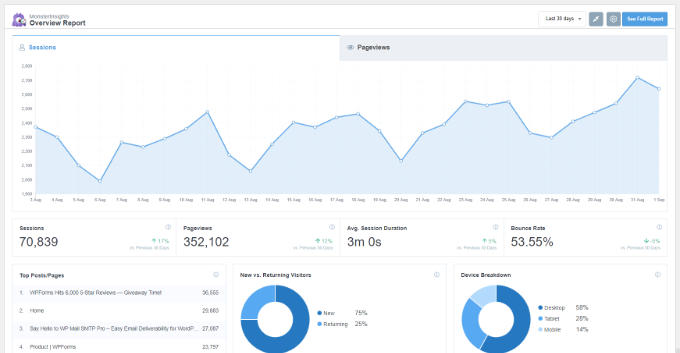
MonsterInsights also keeps things organized with clear tabs. Each tab focuses on a specific area of your website’s performance, like traffic, eCommerce (if you have an online store), search console data, form submissions, site speed, and more.
This makes it easy to find the data you’re looking for without getting overwhelmed. Plus, the language used in the reports is straightforward and easy to understand, even for beginners.
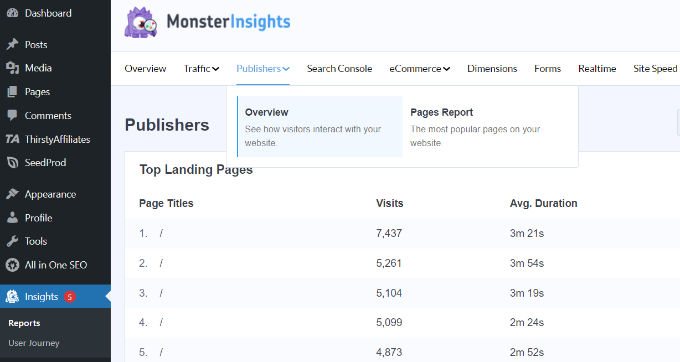
Winner: Jetpack Stats
For its straightforward setup and user-friendly interface, Jetpack Stats wins this round for ease of use. It’s ideal for beginners who want to quickly access essential website analytics without getting bogged down by technical details.
While Google Analytics has a steeper learning curve, once you master it, navigating and extracting insights becomes easier. Plus, using a plugin like MonsterInsights simplifies the entire process and lets you see all your data directly in WordPress.
Web Analytics Features – Google Analytics vs. Jetpack Stats
When choosing an analytics platform, it’s very important to consider how much data you will need to understand your website’s performance effectively. The more insights you have, the better you can tailor your content and improve your overall website experience.
Jetpack Stats: More Focused on Blogs

Jetpack Stats’ feature richness depends on the plan you choose. The free version offers real-time visitor data (updated every 30 minutes), basic stats and trends for posts and pages, and GDPR compliance. These features might be enough if you primarily run a blog.
Here’s a breakdown of the metrics you can see in the free version:
- Traffic overview – 7-day highlights of visitor traffic, page views, likes, and comments with trend comparisons.
- Referrals – Websites sending visitors to your site.
- Visitor location – Which countries your users come from.
- Engagement – Top-clicked external links and email stats.
- SEO insights – Keywords people use on search engines to find your site.
- Content performance – Insights into your posting activity, including most popular posting time, yearly activity overview, and top viewed tags and categories.
While the free plan might be suitable for basic blog analysis, we found it lacked the depth needed for website optimization. Upgrading to a paid plan only unlocks early access to features and UTM tracking, which is necessary if you run targeted marketing campaigns.
Google Analytics: A Powerhouse of Site Stats
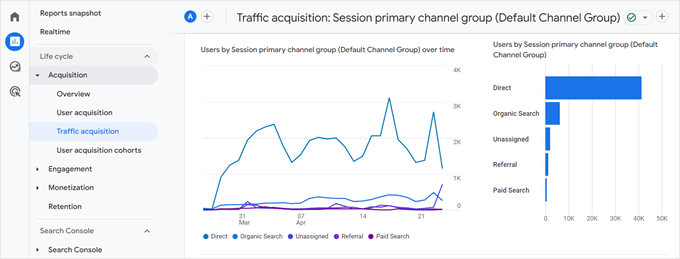
Due to its vast data collection, Google Analytics is a widely used platform across many industries. Similar to Jetpack Stats, it provides data on traffic, users, referrers, countries, and devices.
That said, we found Google Analytics stats to have much more detailed information, such as:
- Site traffic sources – You can see traffic acquisition channels between organic search, paid search, referrals, and social media traffic.
- Engagement analysis – View the average engagement time for each page to determine visitor interest.
- SEO integration – Connect with Google Search Console to analyze clicks, impressions, and organic search landing page performance for specific keywords.
- Conversions – Define key events using Google Tag Manager to track user actions like button clicks, contact form submissions, downloads, or purchases.
- Audience demographics – Gain deeper insights by analyzing user demographics like age, region, and city.
- Actionable insights – Use the ‘Insights & recommendations’ feature for easy-to-understand suggestions on improving your website.
- Visual reporting – Use the ‘Explorations’ feature to create visual reports based on your data.
MonsterInsights takes Google Analytics a step further. This plugin allows you to access even more features like user journey visualization, displaying your top posts on your website based on data, and site notes to give context to important data points.
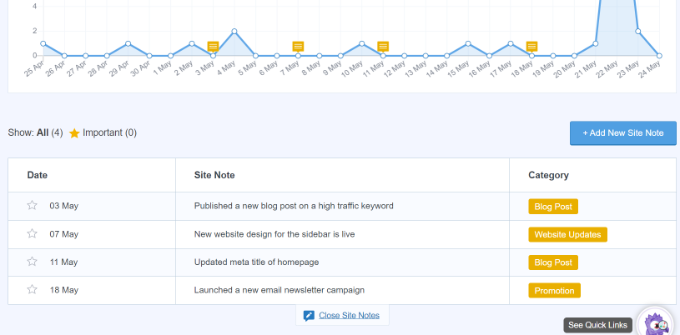
Winner: Google Analytics
The sheer scope of Google Analytics data and features make it the clear winner. You can delve deeper into user behavior, track conversions, gain valuable SEO insights, and create customized reports for your website’s performance.
While Google Analytics might appear intimidating, MonsterInsights simplifies the experience with its user-friendly dashboard reports.
Data Accuracy – Google Analytics vs. Jetpack Stats
When your analytics tools provide accurate information, you can make informed decisions about your website’s content, marketing strategies, and overall user experience.
On the other hand, inaccurate data can lead you down the wrong path, causing you to invest time and resources in ineffective approaches.
Jetpack Stats: Generally Accurate, But Limited Filtering
Jetpack Stats gets data by placing a tracking script on your WordPress website. This script monitors visitor activity and sends the information back to Jetpack for processing.
When it comes to bot traffic, we couldn’t find a lot of information on how Jetpack Stats automatically excludes it in your reports. That said, it is possible to manually mark a referrer as spam so that it doesn’t show up in your site stats.
Another thing you should know is that Jetpack Stats has said that the total visitors count and the specific referrer numbers may be missing from their reports because of rising privacy laws.
So, if your site’s traffic stats look like they are coming from direct sources, they may actually be from other referrers. Simply put, the data you see might not be totally accurate.
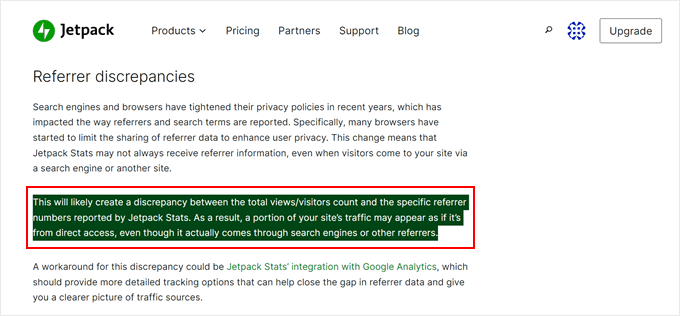
Google Analytics: More Powerful Accuracy Measures
Google Analytics uses a more advanced tracking system that collects detailed and accurate data on visitor behavior.
From our research, here are some methods Google uses to ensure data accuracy:
- IP filtering – Users can define specific IP addresses or address ranges to be excluded from tracking. This is useful for filtering out internal traffic from your office or development team.
- Bot filtering – While not perfect, Google has advanced algorithms to identify and exclude bot traffic from your analytics reports.
- Data sampling – For very high-traffic websites, Google Analytics may use data sampling to provide reports with an acceptable level of accuracy while reducing processing time.
Also, Google, as a search engine giant, has access to a vast amount of data on user behavior across the Internet. This data allows them to improve their algorithms and provide more accurate analytics data for website owners.
That said, rising concerns about data privacy have led some website owners to hesitate about using Google Analytics. However, we’ve found a workaround for using Google Analytics while complying with GDPR laws.
With MonsterInsights, you can use the Privacy Guard feature to keep personally identifiable information out of Google Analytics. Plus, there is an EU Compliance addon that can anonymize visitor IP addresses and integrate with cookie compliance plugins.
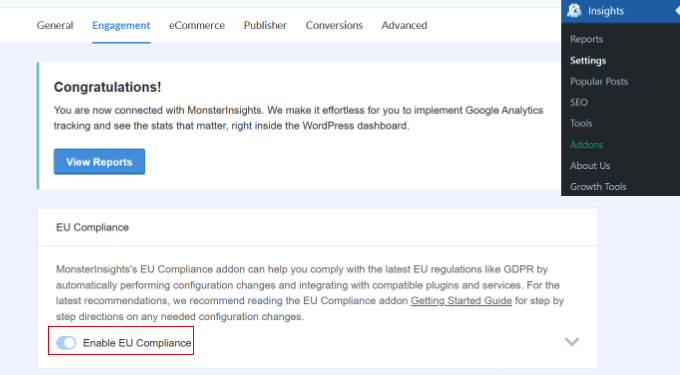
Winner: Google Analytics
Google Analytics is the winner for data accuracy. Their comprehensive tracking system provides a more reliable picture of your website traffic.
While Jetpack Stats offers real-time updates, the lack of clear measures to address bot traffic out of the box can skew your data.
eCommerce Tracking – Google Analytics vs. Jetpack Stats
eCommerce tracking lets you monitor the performance of your online store. By understanding customer behavior within your shop, you can identify areas for improvement and optimize your sales strategy.
Let’s see how Jetpack Stats and Google Analytics stack up in terms of eCommerce tracking.
Jetpack Stats: Limited Insights for WooCommerce Stores
If you have a WooCommerce shop, Jetpack Stats integrates with it to some extent. However, it has limitations.
For one, your shop’s landing page stats get bundled with ‘Home page/Archives’ data since the shop page is technically an archive of your products. This makes it difficult to see the difference between shop-specific traffic and sales from your overall website traffic.
Technically, Jetpack adds a ‘Store’ tab to the dashboard if it sees WooCommerce installed on your website. We were actually excited to check it out, as we expected to see some more data about our demo store.
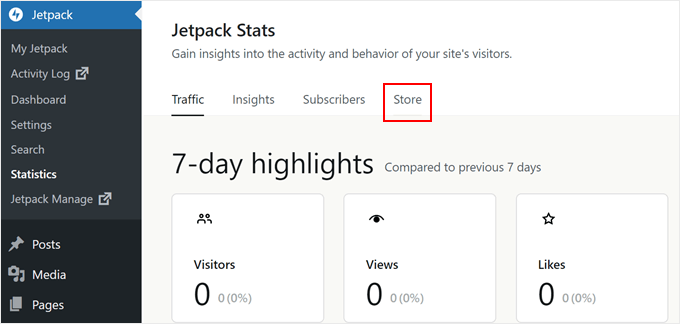
However, this tab simply redirects you to the WooCommerce plugin’s Analytics Overview tab, which displays data like total sales, net sales, orders, average order value, and product information.
These details are handy, but it’s not true eCommerce tracking provided by Jetpack Stats itself.
Google Analytics: In-Depth Tracking and Insights
As we mentioned earlier, Google Analytics allows you to define key events, including purchases, as conversions. This lets you see in-depth analysis of your eCommerce performance within dedicated reports.
You can see not only purchase data but also track product views, cart additions, and abandoned cart rates, helping you identify areas for improvement in your sales funnel and reduce cart abandonment.
Google Analytics also provides valuable customer insights like customer lifetime value, which helps you understand the total revenue a customer generates over their relationship with your store.
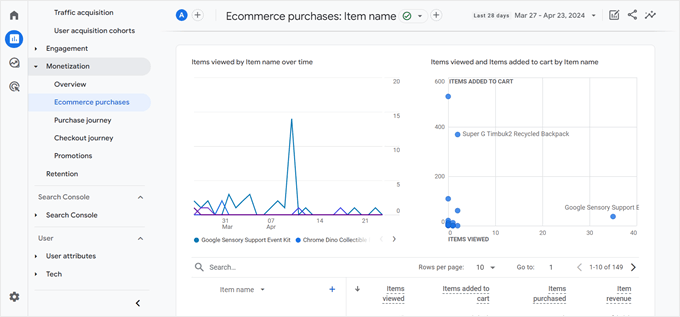
MonsterInsights Pro unlocks even more eCommerce data. When you open the eCommerce report, you can see top conversion sources, add-to-cart rates, product removal rates from carts, and abandoned checkout percentages.
All of this data is helpful for optimizing your website for maximum sales.
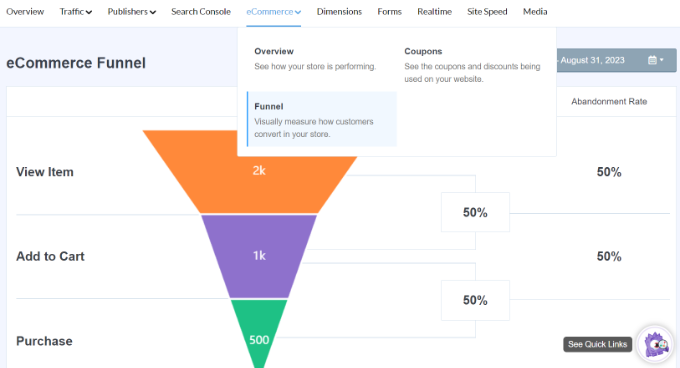
Winner: Google Analytics
Google Analytics’ ability to track key events, analyze customer journeys within the sales funnel, and provide valuable customer lifetime value data makes it a powerful tool for online store owners.
While Jetpack Stats offers a basic WooCommerce integration, it doesn’t have as much information as Google Analytics.
Support – Google Analytics vs. Jetpack Stats
You will likely have questions or issues while using your analytics platform. Having access to reliable and timely WordPress support can help you resolve any problems quickly.
Jetpack Stats: Documentation and Paid Priority Support
Jetpack Stats offers two primary support channels: documentation and support request submission. Their documentation is generally well-organized and helpful, with screenshots to guide you in the right direction.
Upgrading to a paid plan grants you priority support. This means your questions are handled before those submitted by free plan users. However, even with paid plans, support remains limited to submitting a request form.
We couldn’t find any direct channels like live chat or phone support.
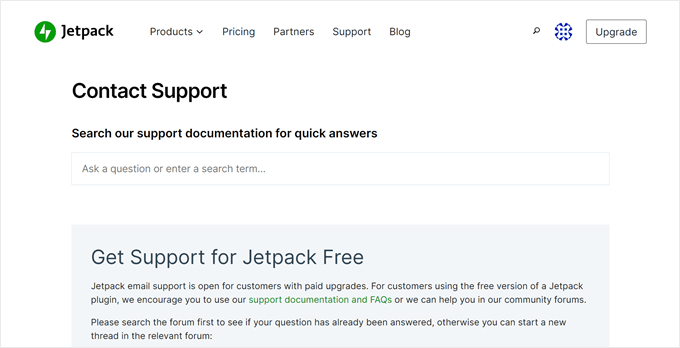
Google Analytics: Extensive Resources and Community Support
Google Analytics offers a different support approach: comprehensive documentation and a large, active community.
Google Analytics has detailed documentation covering a wide range of topics. However, the sheer volume of information can be overwhelming, and some documentation entries may lack visuals.
The good news is that Google Analytics is a widely used platform, so there’s a vast online community with countless resources. You can go to the Google Analytics Help Community if you have any questions.
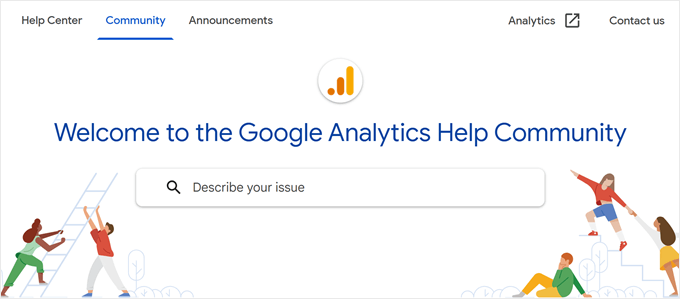
Many websites, including WPBeginner, also offer tutorials, guides, and troubleshooting tips specifically for Google Analytics. Overall, finding solutions to the most common issues is easy with a quick Google search.
If you use MonsterInsights, then you gain access to additional support options. MonsterInsights offers support tickets and a friendly AI chatbot to help you with any issues related to the plugin and Google Analytics.
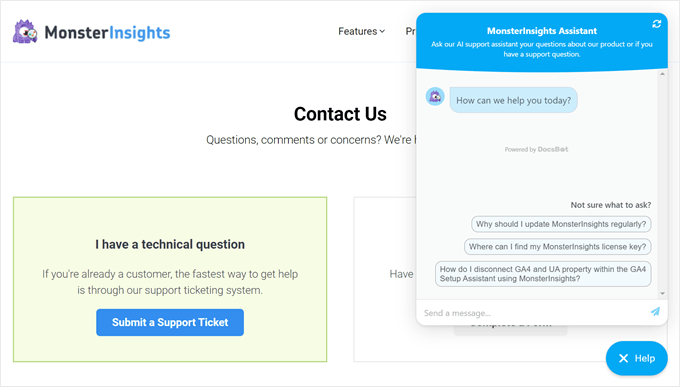
Winner: Google Analytics
While both platforms offer documentation, Google Analytics wins due to their sheer volume of available resources and community support. Additionally, many Google Analytics plugins provide excellent dedicated support.
Pricing – Google Analytics vs. Jetpack Stats
When choosing an analytics tool, you will want to find one that fits your budget while offering the features you need. Let’s explore the pricing structure of Jetpack Stats and Google Analytics.
Jetpack Stats: Freemium with Tiered Pricing
Jetpack Stats offers a freemium model, meaning it has a free tier and paid plans with additional features. The free version is for non-commercial websites, but you can also name a monthly contribution.
It’s important to note that Jetpack defines ‘non-commercial’ strictly. Even non-profit organizations that ask for donations are considered commercial, so you have to read the fine print carefully.
The paid plans start at $8.33 per month, billed yearly (nearly $100 annually), and will increase based on your monthly traffic volume. Here’s a breakdown of their pricing tiers:
- 10,000 monthly views: $8.33
- 100,000 monthly views: $16.67
- 250,000 monthly views: $25
- 500,000 monthly views: $41.67
- 1 million: $58.34
- 2 million: $79.17
The paid plans include priority support, early access to features, and UTM tracking.
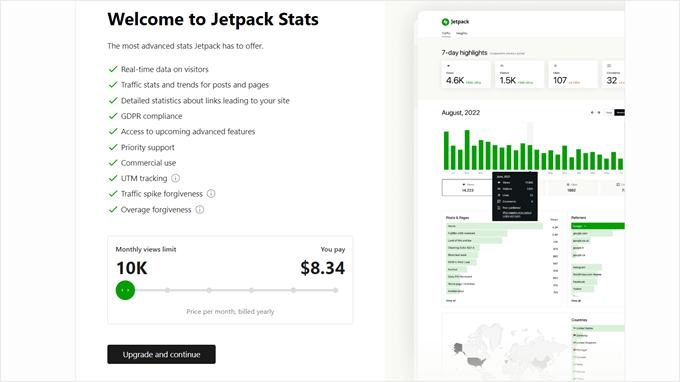
Google Analytics: Free with Premium Options
Google Analytics is a completely free tool, though a paid version called Google Analytics 360 is available for large-scale enterprises. For most website owners, the free version offers more than enough features.
When it comes to plugins that connect your website with Google Analytics, some are free, freemium, or paid. Site Kit by Google is a popular free option, though the data you can view from WordPress is a bit basic.
MonsterInsights has a free version but also offers paid plans starting at $99.60 per year for a single website. These subscriptions provide additional features and insights on top of the free Google Analytics data.

Winner: Google Analytics
Considering the free version and the wider range of freemium plugins available, Google Analytics is again the winner in this round.
The free version offers significant value for most website owners, and paid plugin options like MonsterInsights offer more value than Jetpack Stats.
Google Analytics vs. Jetpack Stats: Which Is Best?
Google Analytics is best for professional bloggers, businesses of all sizes, and anyone who wants to gain deep insights into their website traffic. It provides the most comprehensive data collection and analysis features.
Plus, MonsterInsights is a beginner-friendly plugin that lets you see your Google Analytics data through user-friendly dashboards, simplified information, and useful add-ons.
On the other hand, Jetpack Stats may be suitable for bloggers with basic needs. If you primarily run a blog and don’t require complex data analysis, then Jetpack Stats’ traffic updates, basic post and page stats, and SEO insights could be enough.
Also, if you are already using Jetpack for other features like security, the built-in Jetpack Stats might be a convenient option to get basic WordPress blog analytics without needing another tool.
Since both platforms are free, we encourage you to give them a try and see which one is most suitable for your website.
Learn More About WordPress Stats and Analytics
- How to Set Up Google Analytics Goals for Your WordPress Website
- How to Set Up Email Newsletter Tracking in Google Analytics
- How to Enable Customer Tracking in WooCommerce with Google Analytics
- How to Set Up Google Ads Conversion Tracking in WordPress
- How to Add Google Analytics Scroll Depth in WordPress
- The Ultimate Guide to GA4 in WordPress for Beginners
We hope this article helped you compare Google Analytics vs Jetpack Stats. You may also want to check out our guide on how to do A/B split testing in WordPress and our expert pick of the must-have WordPress plugins to grow your website.
If you liked this article, then please subscribe to our YouTube Channel for WordPress video tutorials. You can also find us on Twitter and Facebook.
The post Google Analytics vs. Jetpack Stats: Which One Should You Use? first appeared on WPBeginner.

